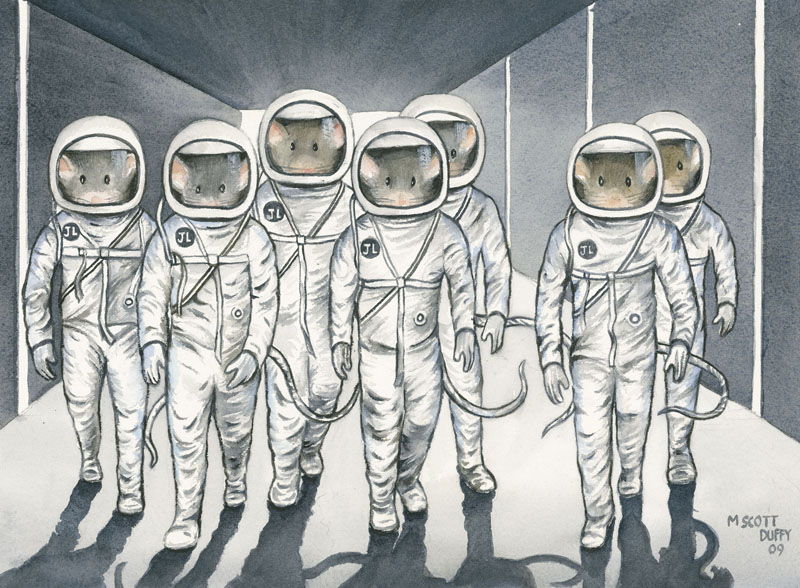It sounds like fodder for an animated film, but it’s serious science for 16 mice from The Jackson Laboratory in Bar Harbor that have hitched a ride on the Space Shuttle Discovery.
The “astromice,” as some people call them, are part of an experiment that will help scientists understand the long-term effects of zero gravity on the immune system’s ability to fight infection.
It’s the second time that mice from the Maine lab have joined a shuttle crew. The first was in 2001, when two dozen JAX Mice flew aboard the Space Shuttle Endeavour for an experiment to study the effects of a weightless environment on bone density.
Each time, the lab has enjoyed the attention generated by their mice, which are specially bred for transplantation studies and immunology research. But no, the critters don’t wear tiny space helmets.
“People get a chuckle out of it,” said Joyce Peterson, the lab’s public relations manager. “It’s very exciting for the lab and for the people of Maine.”
The shuttle lifted off Monday for a 13-day mission. The JAX Mice are featured in one of several experiments happening on the shuttle.
The mice are housed in a special enclosure, used on 23 previous shuttle flights, where they experience microgravity, according to NASA’s Web site. The animals require little care, though the human crew will make daily health checks and replenish the water supply as needed.
Suppression of the immune system in a zero-gravity environment may be a significant obstacle to long-term space travel by humans, according to NASA’s Web site. Scientists wants to know whether astronauts can generate effective protective immune responses against infections while in space.
In particular, NASA hopes the results will help develop ways to improve wound healing and boost the immune systems of future astronauts during stressful, long-duration space flights, according to Peterson.
The experiment will look specifically at Memory T cells, which are the mediators of immune protection after vaccinations. Whether the cells function properly during spaceflight will help determine if pre-flight vaccinations may be useful interventions.
Principal investigator for the mouse immunology experiment is Millie Hughes-Fulford, Ph.D. a San Francisco biochemist who flew a shuttle mission in 1984.
The 16 “astromice,” as she calls them, were transported from her lab in January to NASA’s Kennedy Space Center in Florida, where they acclimated to a diet of “NASA bars,” which are specially formulated to prevent the mice from floating in zero gravity.
Hughes-Fulford has another 16 JAX Mice in a control setting at her California lab, where she will later compare their immune systems to those of the mice who rode the shuttle, Peterson said.
Send questions/comments to the editors.



Success. Please wait for the page to reload. If the page does not reload within 5 seconds, please refresh the page.
Enter your email and password to access comments.
Hi, to comment on stories you must . This profile is in addition to your subscription and website login.
Already have a commenting profile? .
Invalid username/password.
Please check your email to confirm and complete your registration.
Only subscribers are eligible to post comments. Please subscribe or login first for digital access. Here’s why.
Use the form below to reset your password. When you've submitted your account email, we will send an email with a reset code.